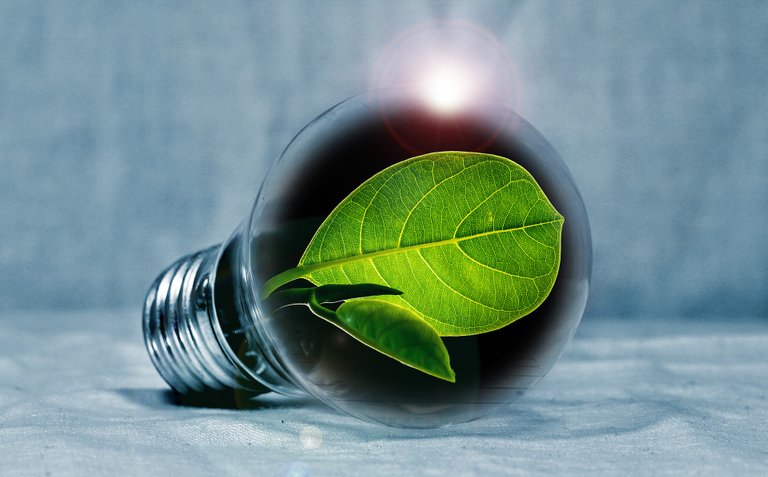Here are the five most promising technological innovations for energy efficiency in 2022

Here are the five most promising technological innovations for energy efficiency in 2022
Technology is all around us. Every day, new gadgets appear to make life
easier, but as more are used, the globe consumes more and more energy.
At the same time, new technology may be the answer to our excessive energy usage.
In general, electronics have become more energy-efficient throughout time.
They can, however, go even farther, giving new solutions for businesses
and people alike to reduce their overall power consumption. Here are five
of the most promising innovations set to hit the market in 2022.
1: Radiofrequency (RF) energy harvesting
The internet of things (IoT) is one of the most significant technological
breakthroughs to emerge in recent years. There are about 22 billion of
these wireless devices in the world, delivering and receiving massive
amounts of data via radio frequency (RF) waves. Some new technology
may be able to create power by utilizing those RF waves.
RF waves transport not just communications but also ambient energy. If
devices could harvest this energy, they could reduce waste, allowing
people to utilise more of the power they consume. If this gets widely
adopted, it has the potential to significantly enhance energy efficiency.
Although the notion of RF energy harvesting is not new, it has only lately
emerged as a possibly practical solution. Researchers have created a
device that can extract milliwatts of power from a wide range of
frequencies. As technology develops, it may be able to assist IoT networks
in reducing power consumption throughout the network.
2: Solar Glass
Solar glass is another promising solution for increasing energy efficiency.
Solar glass collects energy from the sun in the same way as standard solar
panels do, but because it is transparent, it may also function as regular
glass. As a result, adding renewable energy to a building does not have to
compromise its beauty, allowing more people to embrace it.
Solar panels already have tax breaks from the federal government, but
solar glass would make them even more appealing. Adding renewable
energy to a home is more akin to changing a window than installing new
equipment. If a whole office building is outfitted with solar windows, it has
the potential to generate a significant amount of renewable energy.
Solar glass has been around for a while, but 2022 could be the year it really
takes off. Clean energy technology may become more affordable and
efficient this year as more investment and research is directed toward it.
3: EV batteries that are solid-state
Electric vehicles are one of the places where improved energy efficiency
would make the largest difference (EVs). Cars create a lot of dangerous
pollutants, thus transitioning to zero-emission alternatives is critical for
environmental protection. Inefficient batteries make EVs cumbersome, but
solid-state batteries may enhance their range, allowing them to appeal to a
wider audience.
The current median for EVs is 250 miles, which is fantastic, but given how
long they take to charge, it should be much higher. Solid-state batteries
provide a few advantages. They can go longer between charges at first,
and then charge faster when they run out of juice.
Because these batteries have become more affordable, 2022 could be the
year they break into the EV market. Other manufacturers have been
developing hybrid batteries that provide many of the same benefits at a
lower cost.
4: Magnetocaloric refrigeration
Magnetocaloric refrigeration is a technological advancement that may go
unnoticed by many people. This technology uses magnetic fields to heat or
cool an object or area, allowing temperature control while using less energy
than standard methods.
Magnetocaloric refrigeration, according to some research, might cut energy
usage by 20 to 30 percent when compared to normal refrigeration
procedures. It also reduces the risk of these pollutants escaping into the
environment because it does not use any chemical refrigerants. Cold
storage and transportation might become substantially more energy
efficient.
Recent advancements have made this technology significantly more
realistic as a mass replacement for traditional refrigeration. It could be seen
in large-scale supply chain activities by 2022.
5: Peer-to-peer energy trading
Some energy efficiency advancements aren't about energy technology per
se, but rather about making it more usable. This is true of peer-to-peer
(P2P) energy trading. This concept employs blockchain technology to
enable people to buy and sell excess renewable energy, thereby reducing
waste and increasing access to clean energy.
One of the drawbacks of renewable energy is that it is difficult to store, so if
someone does not consume all of the energy they generate, some power is
wasted. Selling excess energy to other people or businesses could fix the
problem, but doing so without going through a third party who may take a
cut is tricky. That problem is solved through peer-to-peer energy trading.
On the blockchain, smart contracts automatically enforce agreements and
retain a transparent but unchangeable record of the transaction. People
who have solar panels or wind turbines can easily sell their excess energy
without the need for a third party.
Article wrote by TheRabbitHole93
Posted Using LeoFinance Beta
Not written by you. Theft is wrong
https://techaeris.com/2021/12/13/5-most-promising-tech-innovations-for-energy-efficiency-in-2022/
Source of plagiarism
There is reasonable evidence that this article has been spun, rewritten, or reworded. Posting such content is considered plagiarism and/or fraud. Fraud is discouraged by the community and may result in the account being Blacklisted.
Guide: Why and How People Abuse and Plagiarise
If you believe this comment is in error, please contact us in #appeals in Discord.